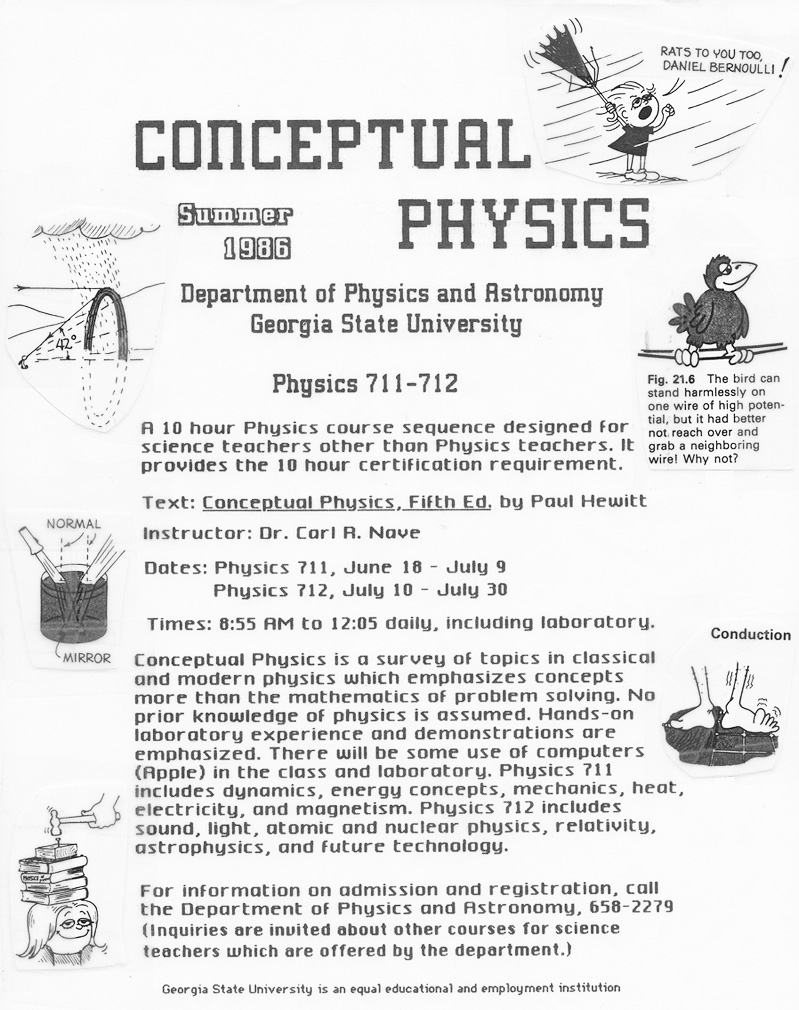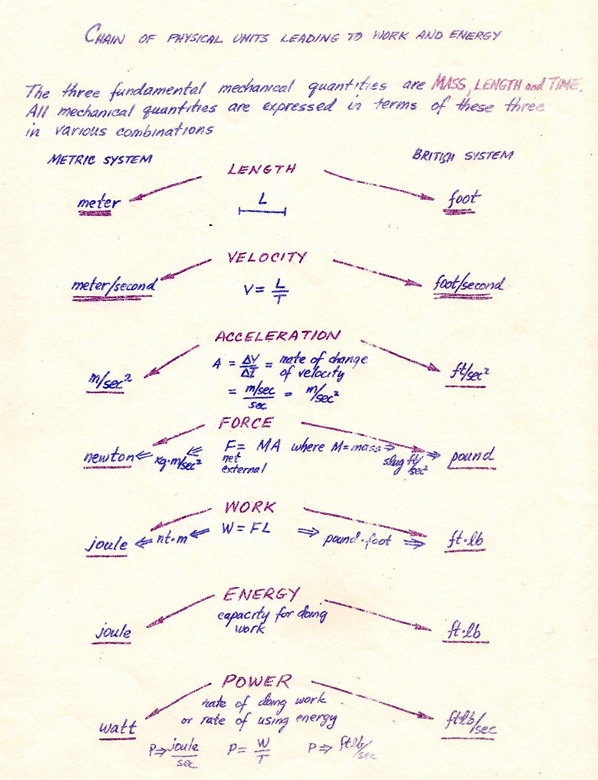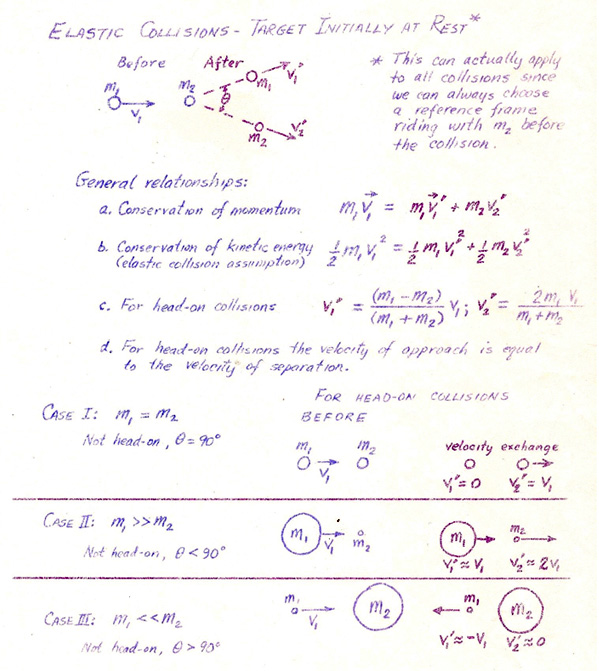Conceptual Physics and Rod's Teaching
Rod was again scheduled to teach the intensive Conceptual Physics in two three-week courses beginning on June 18. This course was designed to give some conceptual background to science education majors who were going to teach physical science in elementary or middle school. Dr. Joe Hadley, Chair of Physics and Astronomy, had approached Rod in 1980 about developing this course and he had taught it each summer since that. It was developed at the request of the College of Education to meet a certification requirement for these students.

The above is a flyer that Rod produced to promote the course to the science education students. It represents about the state of the art for computer graphics at that time. The graphics were xeroxed from Hewitt's Conceptual Physics text which was used for the course. Taping the small xeroxed segments on the printed page was the best he could do at the time. The text layout may have been on the first Macintosh that came out at about that time, or may have been on the later models of the Apple-II which we were using in the laboratory for Conceptual Physics at that time. There was no color graphics capability on the computers at that time.
 | Rod mostly taught the class by writing and drawing on the green chalkboard at the front of the laboratory room (Kell 524) along with multiple demonstrations and laboratory exercises. The handout at left is an example of the best technology he had at his disposal for handouts. Multiple handouts followed the pattern of some of the things he would write on the chalkboard. The handout at left was made on a machine we called a "spirit duplicator" because of the "spirit" solvent that was used in the machine to transfer the image to paper. There were master sheets on which he could write or draw, and it transferred the gel-like ink to the master. With two different colors of master sheets, he could make two-color handouts. |
Outlining the concepts of the course on handouts in addition to the writing and drawing on the board seemed to be helpful to the students. Rod taught the Conceptual Physics course throughout the 1980s in Kell 524, which was directly across from his office in 514B Kell. The personal computer came into being during that time frame, with the first programmable boxes in the early 80s, transitioning to the Apple-II computers and then growth in our capability to program them and use them in experiments. During this decade, Rod's thinking was developing along two lines. First was the realization that this intensive six weeks course sequence was not going to be nearly enough to meet the needs of these students when they got out into the classroom. This impression was heightened by interaction with a number of the former students who had made the transition to high school teaching, and being found with more physics background than anyone else in the school, they began to teach the high school physics course. |  |
Second, the rapid development of computer capability with the introduction of the Apple Macintosh and the appearance of the first vector graphics program called Adobe-88 in 1988, the dream of a computer-based exploration environment to help these teachers on an on-going basis began to form.
This dream ultimately led to HyperPhysics, which was developed originally to be a tool for teachers to provide ongoing help to them as they taught. The Macintosh as a graphical interface encouraged the development of a graphical interface for HyperPhysics. Many of the items like the introduction to collisions above made their way into HyperPhysics. Having done graphics on the chalkboard for many years, it was somewhat natural to produce a graphical environment to help teachers and students.
| Sherry, Jeff and Mark to Martinique |
1986